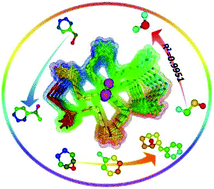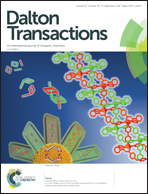A multifunctional Co-based metal–organic framework: heterogeneous catalysis, chemiluminescence sensing and moisture-dependent solvatochromism†
Abstract
Crystalline materials with multi-catalytic applications are of great value to both fundamental research and practical applications. The platform of metal–organic frameworks (MOFs) is utilized to fabricate a microporous versatile catalyst with high stability. Self-assembly of a flexible ligand, 4-(4-carboxybenzylamino)benzoic acid (H2CBBA), with Co(II) resulted in a 3D framework, CBBA-Co, with Co3O clusters exposed in the zigzag channels. Upon in situ activation, CBBA-Co exhibited multiple heterogeneous catalytic activities. Theoretical calculations were carried out to give insights into the catalytic process. In addition, CBBA-Co also showed promising potential in optical sensing by virtue of its catalytic activity. The luminol chemiluminescence was greatly enhanced by CBBA-Co, and linear determination of the concentration of H2O2 in the range of 0–30% was established. The successful implementation of CBBA-Co indicates the feasibility and promising future of employing MOFs as an efficient platform for the fabrication and study of multifunctional catalysts, both experimentally and theoretically.



 Please wait while we load your content...
Please wait while we load your content...